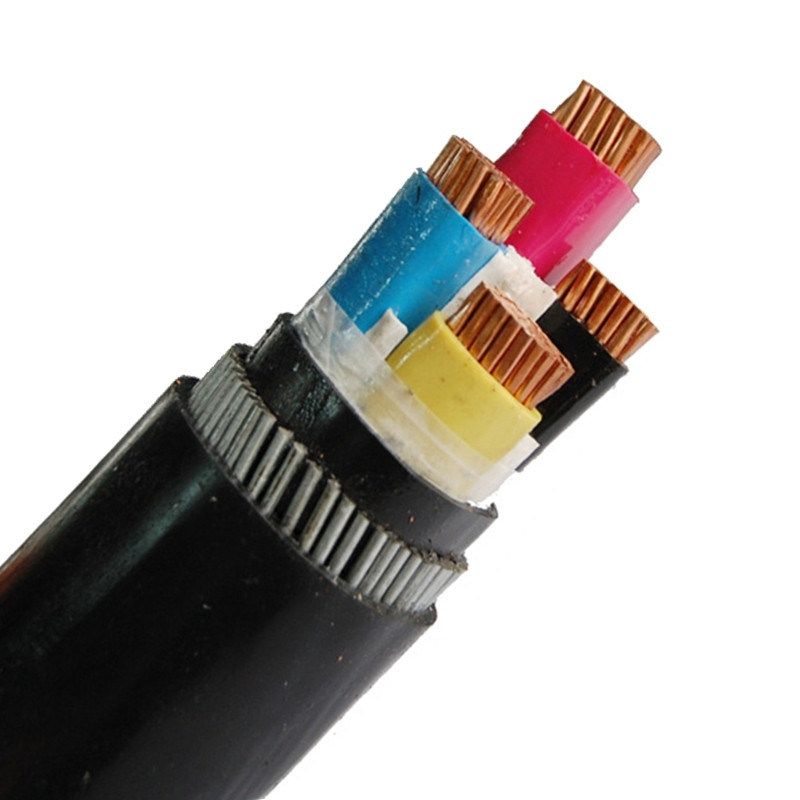-
![Is it better to ha···]() 2025-09-09 Is it better to have a multi···
2025-09-09 Is it better to have a multi···Power cables are generally categorized as single-core, two-core, and three-core cables. Single-core cables have only one conductor within a single insulation layer, while two-core cables have two conductors within a single insulation layer. Both types have their advantages and disadvantages. For exa
read more > -
![What are the advan···]() 2025-09-09 What are the advantages and ···
2025-09-09 What are the advantages and ···Aluminum alloy cables are commonly found in our building materials. They are the latest high-tech cable products. So, what are the advantages and disadvantages of aluminum alloy cables? This is a topic of great interest, and today we'll take a look at aluminum alloy cables.1. Creep ResistanceThe
read more > -
![How to distinguish···]() 2025-09-09 How to distinguish wires and···
2025-09-09 How to distinguish wires and···How to Identify Wires1. Wire: A conductive metal wire consisting of one or more flexible conductors, covered in a light, soft sheath, used to carry current. It can be solid, stranded, or braided. Based on the insulation, it is categorized into bare wire and insulated wire.2. Bare wire: Wire without
read more > -
![Aluminum alloy cab···]() 2025-09-09 Aluminum alloy cable models ···
2025-09-09 Aluminum alloy cable models ···With the development of the power industry, power transmission via wires not only brings light to countless homes but has also become an indispensable part of daily life. Wires are made of aluminum alloy cables. Below is an introduction to aluminum alloy cable models and related common sense for you
read more > -
![High voltage cable···]() 2025-09-09 High voltage cable model cha···
2025-09-09 High voltage cable model cha···High-voltage cable is a type of power cable used to transmit power between 10kV and 35kV (1kV = 1000V). It is primarily used in power transmission trunk lines. Below, Cable Baolai introduces the types and structures of high-voltage cables, as well as the causes of high-voltage cable failures.1. Type
read more > -
![What type of wire ···]() 2025-09-09 What type of wire is VVR? Wh···
2025-09-09 What type of wire is VVR? Wh···What's the difference between VVR and AVVR? While VVR and AVVR cables may look nearly identical, there are substantial differences. RVV cable stands for copper-core PVC insulated and sheathed flexible cable, also known as lightweight PVC sheathed flexible cable or soft-sheathed cable. It's a
read more > -
![How do fiber optic···]() 2025-09-09 How do fiber optic cables wo···
2025-09-09 How do fiber optic cables wo···Fiber optic cable is the use of one or more optical fibers placed in the cladding sheath as a transmission medium and can be used individually or in groups of communication cable components. It is mainly composed of fiber core, cladding, coating, reinforcing elements outer sheath, and other parts, a
read more > -
![What is the Differ···]() 2025-09-09 What is the Difference Betwe···
2025-09-09 What is the Difference Betwe···The cable industry has evolved significantly to meet the diverse needs of modern electrical and communication systems.Among the many cable types,concentric cables,coaxial cables, andsingle-core cableseach have distinct characteristics, structures, and applications. In t
read more > -
![An article for you···]() 2025-09-09 An article for you to summar···
2025-09-09 An article for you to summar···In the world of electrical cables, armored cables stand out as robust and reliable options for various industrial and commercial applications.Among the many types of armored cables, SWA, STA, AWA, and ATA cables are particularly noteworthy.These cables differ in construction and applicat
read more > -
![What is the Common···]() 2025-09-09 What is the Common Use for A···
2025-09-09 What is the Common Use for A···Armored high voltage cables are a vital component in modern electrical and industrial infrastructure. These cables are designed to provide reliable power transmission while withstanding mechanical stress and harsh environmental conditions. Their unique construction—combining high-voltage conducting
read more >


